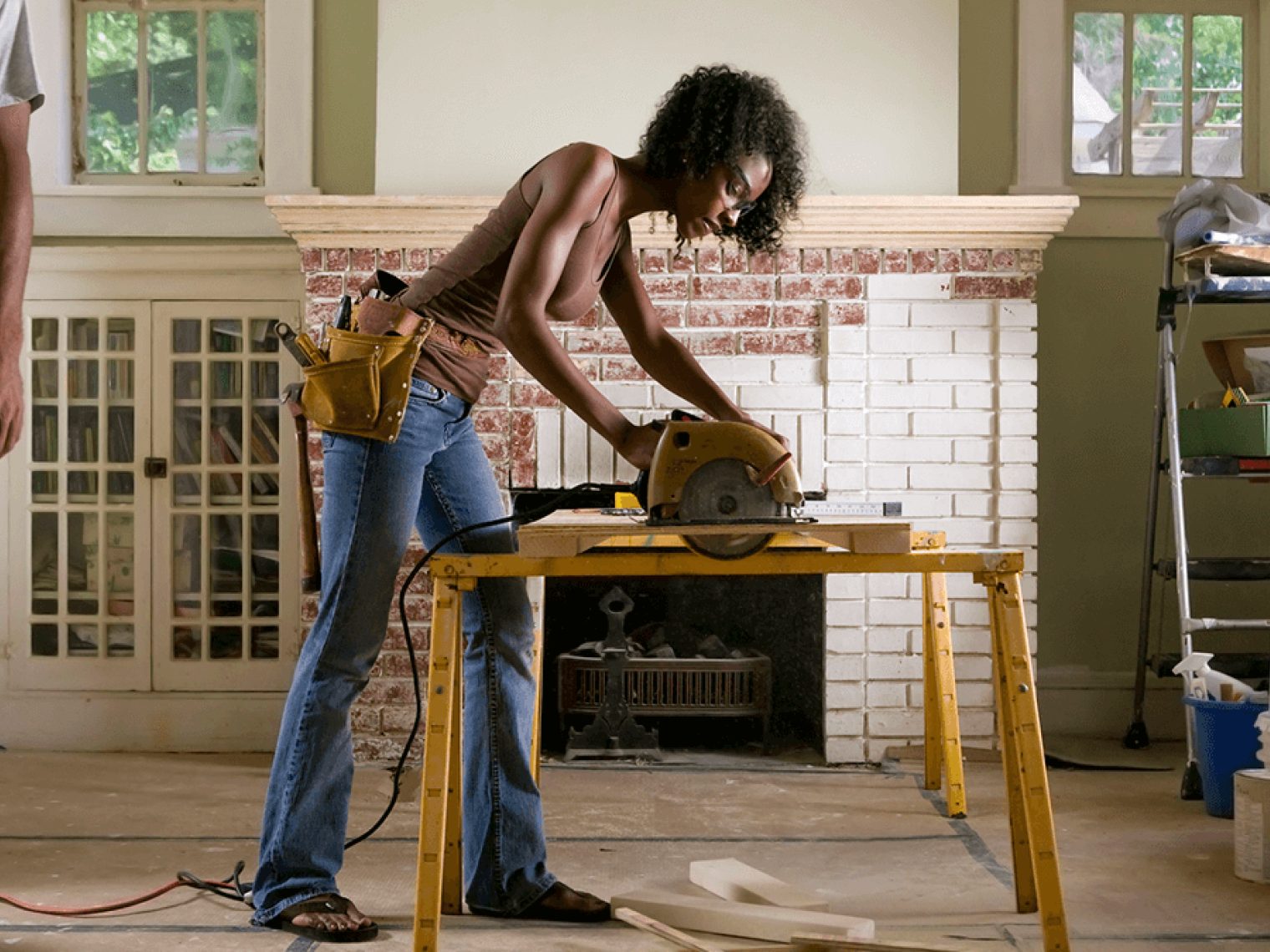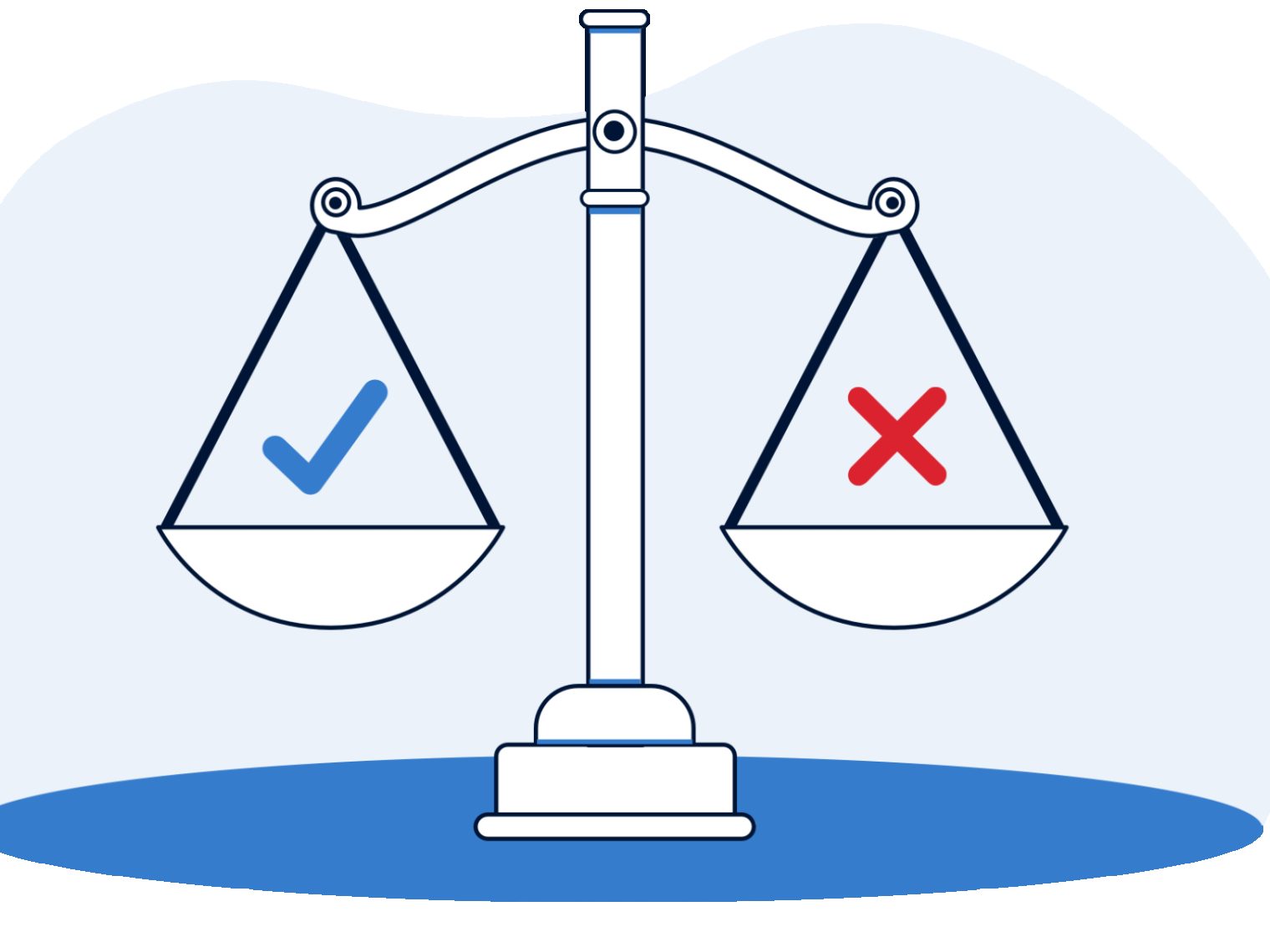- The VA has a form of home requirements known as the Minimum Property Requirements (MPRs) to ensure the property is a safe and structurally sound.
- A VA appraisal determines whether the property meets these standards.
- Understanding MPRs upfront can help you avoid delays and keep your VA loan moving forward.
The Department of Veterans Affairs utilizes a series of Minimum Property Requirements (MPRs) that a home must meet to qualify for a VA loan. These property requirements help ensure that Veterans and military families have a safe, structurally sound and sanitary place to call home.
Before approving the mortgage, your VA lender will request an appraisal performed by an independent VA appraiser who will determine if the property satisfies these basic home requirements.
VA Minimum Property Requirements at a Glance
- Working electric, heating and cooling systems
- Adequate roofing that will last the foreseeable future
- Sufficient in size for basic living necessities
- Clean, continuous water supply with sanitary facilities
- Free of lead-based paint
- Free of wood destroying insects, fungus and dry rot
- Safe and sanitary sewage disposal
- Accessible from an all-weather public or private street
- Attics and crawl spaces must be accessible and properly vented
Home Inspections and the VA Appraisal
The VA does not require homebuyers to get a home inspection. However, it's typically a good idea as an added layer of protection.
Home inspections assess the overall structure (including the roof, HVAC system, foundation and more) against local building codes to uncover potential issues the VA MPRs may miss.
Home inspection costs vary by location, home size and property type. According to the U.S. Department of Housing and Urban Development, anywhere from $300 to $500 for a home inspection is typical.
Complete List of VA MPRs
During the VA appraisal, a VA-assigned appraiser checks the property value and its compliance with the long list of VA MPRs, which determines the property’s eligibility for a VA loan.
Once the origination appraisal is complete, the borrower will receive a Notice of Value (NOV) valid for six months which will recommend that they proceed with a home inspection if desired.
Here is a complete list of VA loan appraisal requirements.
Marketable Real Estate
To meet VA MPRs, the property must be a residential dwelling (up to four units) that would appeal to most buyers. There is no upper limit for acreage, and it may include more than one parcel, although the appraisal must be prepared subject to placing them all on a single deed.
The property may be divided by a road or a waterway as long as this situation does not impact its utility and marketability.
Space Requirements
Although the VA loan inspection requirements do not set a limit, the property must be big enough for the occupants to use comfortably and include facilities for living, sleeping, cooking, dining, maintaining hygiene, etc.
Unique homes are acceptable as long as they comply with local building codes and their construction does not affect their marketability.
Access
The property must be accessible safely year-round by foot or vehicle using a public or private road in all weather (dirt roads do not fulfill the VA loan appraisal requirements). If applicable, access to the private road must be protected by a recorded permanent easement or right-of-way.
Encroachments
The VA appraiser must report if any improvement, utility easement or right-of-way encroaches on the property line, and the issue will need to be resolved before the VA loan is approved.
Drainage and Topography
For the property to satisfy the VA loan home requirements, the waste and surface water must flow off the house without ponding, and there should not be any risks of threats such as mudslides from adjoining properties, falling rocks or avalanches.
Geological or Soil Instability, Subsidence and Sinkholes
Although some settlement is to be expected, the VA appraiser should report any signs of potential instability if they may affect the value or safety of the property, including cracks in the terrain, sinkholes, foundation damage or settlement problems.
In some cases, the appraisal may be made subject to repair by a licensed contractor (if there are foundation issues, for example).
Special Flood Hazard Area
If the property is located in an area that floods regularly, either because it is located in a FEMA-designated Special Flood Hazard Area (SFHA), which requires a flood insurance policy, or based on the appraiser's knowledge of the local market, it does not comply with VA loan home requirements.
Coastal Barrier Resource System
Properties located in Coastal Barrier Resources System (CBRS) areas near the Atlantic Ocean, the Great Lakes, the Gulf of Mexico or the Caribbean Sea, which protect inland properties from storm surges, do not meet VA MPRs.
Non-Residential Use
VA loans are designed to purchase a residential property to be used as a primary residence. However, homes with a single accessory commercial dwelling may meet VA minimum property requirements as long as the property is used primarily as a residence and complies with local zoning requirements.
In addition, VA appraisers must not include the business unit's value in their property valuation.
Zoning
The property must comply with all applicable zoning ordinances to meet VA loan appraisal requirements. "Legal Non-Conforming" properties (a.k.a. grandfathered properties) may comply with VA MPRs as long as the situation does not affect the value and marketability of the property. The appraiser must state whether or not the dwelling may be legally rebuilt if destroyed.
Local Housing and Planning Authority Code Enforcement
Sometimes, specific local housing/planning authority code requirements kick in once the property is sold. If the VA appraiser is aware of repairs that may be necessary to bring the property up to code before the transaction is complete (i.e., removal of unpermitted improvements), the appraisal must be made subject to these repairs.
Utilities
VA loan appraisal requirements are set to ensure that the property purchased with a VA loan is safe and move-in ready. All units on the property must have access to safe drinking water, sewer, gas and electricity.
Water Supply and Sanitary Facilities
Similarly, all units must have a continuous supply of safe and potable water for drinking (including a central filtering system if necessary) and hot water for bathing, showering and other sanitary uses. The property should also have appropriate sanitary facilities and a safe method of sewage disposal.
Individual Water Supply
Properties with individual water supplies may satisfy VA MPRs as long as the water source (whether it is supplied by a dug well, cisterns or holding tank and sourced through springs, lakes, rivers, sand-point or artesian wells, a rainwater catchment system or purchased and hauled on-site) is sufficient and safe for human consumption, using a filtration system or mechanical chlorinator if needed.
Individual Sewage Disposal
Individual sewage disposal systems are compliant with VA MPRs if they are adequate and do not endanger public health. Outhouses are acceptable as long as they are customary in the area and installed in accordance with the recommendations of the local health authority.
Shared Wells and Sewage Disposal
If the property uses a well shared by two or more properties (such as an HOA or a neighborhood, for example), it can meet VA loan appraisal requirements if it is safe for human consumption and provide an adequate water supply even if each house uses it simultaneously. Maintenance must be ensured by a permanent easement and an agreement containing provisions for the cost of repairs binding all signatory parties and their successors in title. The same conditions apply to communal sewage systems.
Hazards
The property must be free of hazards, whether they could potentially affect the health and safety of the residents or prevent them from enjoying their property by being a nuisance or impacting the soundness of the dwelling.
Defective Conditions
Some issues may negatively impact the dwelling's safety, sanitation or structural soundness and prevent it from fulfilling VA MPRs, such as a defective construction caused by poor craftsmanship, the presence of damages due to pests, leakage, deferred maintenance, etc.
If the VA appraiser notices any issues that could affect the property's value, the appraisal must be made subject to the damages being repaired and the original cause being remediated before the VA loan is approved.
Mechanical Systems
Although VA appraisers are not home inspectors and will not test the proper functioning of essential systems such as HVAC, heating, appliances, etc., they will note if the systems do not appear safe to operate and are not protected from the elements. They may recommend that systems that are obviously damaged be fixed before the VA loan is approved.
Heating
The property must be able to maintain a temperature of at least 50°F in all areas with plumbing. VA MPRs do not require a permanent heating system in warmer climates. However, the owner must obtain a written certification from a licensed heating contractor for an approved oxygen-depletion sensor if the dwelling has a permanently installed, non-electric, non-vented fireplace or another non-vented space heater.
There are no VA Minimum Property Requirements for air conditioning regardless of the climate, but if a system is installed, it must be operational, or the appraisal be made subject to repairs.
Leased Mechanical Systems and Equipment
Leased mechanical systems and equipment, such as fuel or propane storage tanks, solar or wind systems, etc., must be identified, but their value will not be included in the appraisal report. However, the appraiser must consider any detrimental effect on the value of the property if the lessor removes the leased items.
Alternative Energy Equipment
As long as alternative energy systems using wind, geothermal or solar energy are not leased, their value and marketability are included in the VA appraisal report.
Roof
The appraiser is not required to check the roof's condition and will make note if it is not visible from the ground (if it is covered in snow, for example.) However, they must ensure that no defects are visible from the inside (such as leakage of trapped moisture) that could suggest that the roof does not satisfy the VA MPRs of providing "reasonable future utility, durability and economy of maintenance."
Answer a few questions below to speak with a specialist about what your military service has earned you.
Attics
The VA appraiser will check the condition of the attic as long as it is readily accessible (if there is a scuttle and nothing hindering the visibility, such as insulation or objects in storage.) They will make notes if they notice potential issues, such as water stains or trapped moisture, and the appraisal will be prepared subject to repairs.
Crawl Space
VA appraisers must check any crawl space if they are readily accessible and contain mechanical systems to check for adequate ventilation and an absence of excess moisture, but they are not required to enter.
The floor joists must be sufficiently above the highest level of the ground to provide access for maintenance and repair of ductwork and plumbing if those systems are located under the house.
Basements
The VA appraiser must inspect the basement and report any signs of dampness or structural issues that may affect the health and safety of the residents. In addition, the VA minimum property requirements demand that the appraiser reports a sump pump's presence and condition.
Swimming Pool
VA guidelines for homes with swimming pools depend on the specific type. If the property includes an inground swimming pool, the appraiser must determine its condition and effect on the property value. If the pool is covered, winterized or otherwise not in use, the appraiser must assume it is in good working order.
If there is evidence of damages, the appraiser must make a note and prepare the appraisal report subject to repairs. Above-ground pools may be included in the appraisal if it includes permanent equipment such as water filtering equipment and decking, and if this setup is customary in the area.
Burglar Bars
If present on the property, the VA Minimum Property Requirements demand that burglar bars be equipped with quick-release mechanisms on at least one of the windows to allow occupants to escape in case of fire unless there is an exterior door from the bedroom providing rapid egress.
Lead-Based Paint
The VA appraiser must report the presence of any chipping paint on the exterior of the house, and the issue must be remediated before closing for the VA loan to be approved. If the property was built before 1978, the presence of lead-based paint, which is a health hazard, must be presumed.
To remediate the issue, the chipping paint must be resealed with two layers of suitable nonleaded paint or covered with appropriate materials such as gypsum wallboard, plywood or plaster. Lead paint presents a severe threat, and the VA does not issue any waiver due to the extra cost of this project. The VA appraiser must certify that the issue has been resolved before closing for the loan to go through.
Wood Destroying Insects/Fungus/Dry Rot
The presence of wood destroying insects, fungus or dry rot can jeopardize the structural soundness of the property. Therefore, the VA appraiser must note any evidence of those issues in their report, and all damage must be fixed.
For properties located in areas where termites are prevalent, a wood-destroying insect inspection report must be required on the NOV unless the property is located in a high-rise condominium building.
Radon Gas
For new construction properties, the builder must certify that radon-resistant construction techniques were used according to local building codes where applicable.
Potential Environmental Problems
If the VA appraiser notices the presence of potential environmental problems that may affect the value of the property, such as underground storage tanks, slush pits, oil and gas wells or any other possible sources of contamination, the appraisal report must be prepared subject to correction of the problem following any local regulations and requirements.
Stationary Storage Tanks
If the property is located within 300 feet of an above-ground or subsurface stationary storage tank with a capacity of 1,000 gallons or more containing flammable or explosive material, whether it was used for domestic or commercial use, the appraiser must report their presence and the possible effect on the property value by using comparable sales with a similar set-up if available.
Mineral, Oil and Gas Reservations and Leases
The appraiser must consider the impact of mineral, oil and gas reservations and leases on the property rights (if there is an encumbrance, for example) and any adverse influence on the neighboring properties.
High Voltage Electric Transmission Lines
To meet the VA loan appraisal requirements, no part of the residential dwelling may be located within a high-voltage electric transmission line easement. If other detached improvements are located within the easement, they may not be used in the final valuation.
Besides, the appraiser must note in their report if the property is within 100 feet from the nearest boundary of a high-voltage electric transmission line easement.
High-Pressure Gas and Liquid Petroleum Pipelines
To meet the VA MPRs, no part of the residential dwelling may be located within a high-voltage electric transmission line easement. If other detached improvements are located within the easement, they may not be used in the final valuation.
Besides, the appraiser must note in their report if the property is within 100 feet from the nearest boundary of a high-voltage electric transmission line easement.
Properties Near Airport
The proximity of an airport may affect the property negatively due to the noise and light pollution, as well as the increased possibility of a major accident, affecting the house's value. The appraiser should use comparable sales with the same airport influence whenever possible to evaluate its impact on the property's marketability.
In addition, the borrower must acknowledge in writing the location of the property in a Clear Zone (a.k.a. Runway Protection Zone) or an accident protection zone and its possible impact "upon the livability, safety, value and marketability of the property" to obtain the NOV.
Additional MPR Recommendations
Property prices have increased rapidly in the past two years, making homeownership challenging to access for first-time home buyers and those on a limited income, even with the help of a no-down payment mortgage like a VA home loan. Therefore, many house hunters are considering alternative types of housing, such as manufactured homes (a.k.a. mobile homes) or modular homes, which may be more affordable than traditional properties.
These properties are typically considered the same way as conventionally built homes as long as they are secured on a permanent foundation and are subject to the same VA minimum property requirements listed above.
They must be at least 400 sq. ft. for a single-wide and 700 sq. ft. for a double-wide manufactured home and be built in compliance with local codes and zoning requirements. In addition, the appraiser must use comparable sales which would appeal to the same buyer and may include modular homes, manufactured homes, but also conventionally built homes.
What Happens if the Home Fails the MPRs?
What happens if you have fallen in love with a house that does not meet the VA loan appraisal requirements? The VA will not approve a loan on a property that does not comply with the VA MPRs, but it does not necessarily mean that you will need to renounce the home of your dreams entirely.
If the current property owner agrees and the property may comply with the VA minimum property requirements after repairs, they may fix the house beforehand so it can get over the MPR threshold and have it appraised again – hopefully with a better outcome.
In some cases, the VA may consider waiving the MPR repairs.
Veterans whose prospective property fails to meet MPRs will be hard-pressed to secure VA financing.
MPR Waiver
The VA appraiser establishes a Notice of Value (NOV) valid for six months. Once the NOV has been issued, the borrower may request that the VA waive the MPR repairs as long as the lender agrees and the property is safe, structurally sound and sanitary enough to be occupied.
Although it is not a requirement, providing an inspection report issued by a licensed professional can support the borrowers' cause and ensure they are thoroughly informed of the property's condition. If the request is approved, the VA will remove the MPR repairs from the NOV; reducing the value of the repairs that were not completed would affect it.
Sometimes, the borrower may proceed with the MPR repairs after the loan closes. In this case, the lender will hold the funds to be used for the repairs in escrow. However, the property will still have to comply with the VA MPRs, and the escrowed funds be distributed before the loan may be guaranteed by the VA.
Answer a few questions below to speak with a specialist about what your military service has earned you.
How We Maintain Content Accuracy
Our mortgage experts continuously track industry trends, regulatory changes, and market conditions to keep our information accurate and relevant. We update our articles whenever new insights or updates become available to help you make informed homebuying and selling decisions.
Current Version
Jul 1, 2025
Written ByChris Birk
Reviewed ByDon Wilson
Added video about VA Loan Property Guidelines
Jun 30, 2025
Written ByChris Birk
Reviewed ByDon Wilson
Added expert insight to provide more context to the article.
Jan 8, 2025
Written ByChris Birk
Reviewed ByDon Wilson
Minor updates were made after a review from underwriter Don Wilson.
Veterans United often cites authoritative third-party sources to provide context, verify claims, and ensure accuracy in our content. Our commitment to delivering clear, factual, and unbiased information guides every piece we publish. Learn more about our editorial standards and how we work to serve Veterans and military families with trust and transparency.
Related Posts
-
 VA Renovation Loans for Home ImprovementVA rehab and renovation loans are the VA's answer to an aging housing market in the United States. Here we dive into this unique loan type and the potential downsides accompanying them.
VA Renovation Loans for Home ImprovementVA rehab and renovation loans are the VA's answer to an aging housing market in the United States. Here we dive into this unique loan type and the potential downsides accompanying them. -
 Pros and Cons of VA LoansAs with any mortgage option, VA loans have pros and cons that you should be aware of before making a final decision. So let's take a closer look.
Pros and Cons of VA LoansAs with any mortgage option, VA loans have pros and cons that you should be aware of before making a final decision. So let's take a closer look.





